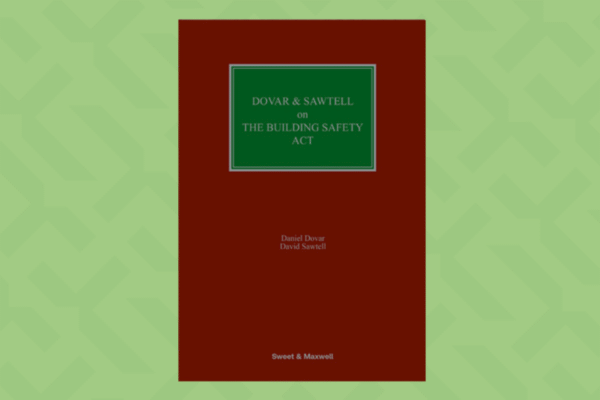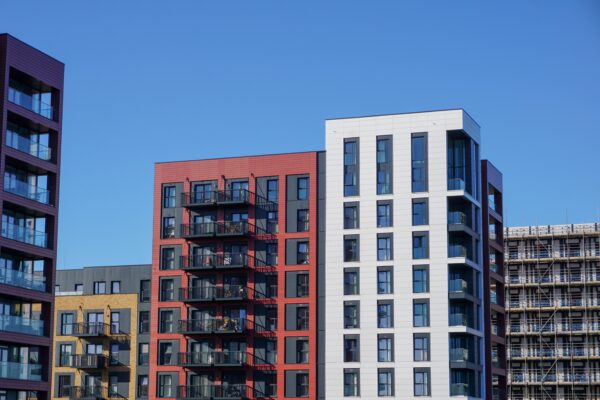We are pleased to announce the publication of Dovar & Sawtell on
Supreme Court Hands Down Landmark BSA Decision in URS Corporation Ltd v BDW Trading Ltd [2025] UKSC 21.
![Supreme Court Hands Down Landmark BSA Decision in URS Corporation Ltd v BDW Trading Ltd [2025] UKSC 21.](https://tanfieldchambers.co.uk/wp-content/uploads/2025/05/shutterstock_2484711995-1800x1200-jpg.webp)
In the first of two highly anticipated appeals on the Building Safety Act 2022 (the “BSA”) this year, the Supreme Court has just handed down its judgment in the matter of URS Corporation Ltd v BDW Trading Ltd [2025] UKSC 21.
Background
Since the tragedy of the Grenfell Fire in June 2017, all parties involved in high-rise residential developments have been aware of the potential for defects that compromise the safety of the property. This was one such case.
BDW is a well-known developer (whose brands include Barratt Homes and David Wilson Homes), and appointed URS to provide structural design services in relation to two high rise residential developments known as Capital East and Freemans Meadow (the “Developments”). BDW no longer had any proprietary interest in the Developments which were run by third-party management companies.
It was accepted that the Developments suffered from various defects as a result of URS’s failure to exercise reasonable skill and care in the provision of its design services.
In 2020/21 BDW, considering that the defects posed a present danger to occupants, undertook remedial works despite being under no legal obligation to do so; Any action against BDW would have been time barred by this date. At the same time, BDW issued proceedings against URS for negligence.
At a preliminary issue trial Fraser J ([2021] EWHC 2796 (TCC)) held that the scope of URS’s duties did extend to the heads of loss claimed by BDW (save BDW’s claim in reputational damage).
In June 2022, s. 135 of the BSA came into force, and – among other things – retrospectively extended the limitation period for accrued claims under s. 1 of the Defective Premises Act 1972 (“DPA”) from six years to 30 years. BDW therefore applied to amend their claim to include a claim under the DPA which was granted by Adrian Williamson KC sitting as a deputy High Court judge: [2022] EWHC 2966 (TCC).
The decisions of Fraser J and Adrian Williamson KC were appealed and dismissed by the Court of Appeal ([2023] EWCA Civ 772). The Supreme Court gave permission to appeal on four grounds, which can be summarised as:
Ground 1: Whether the damage suffered by BDW was outside of the scope of the duty of care and/or too remote because it was voluntarily incurred.
Ground 2: Whether s. 135 of the BSA applied and what its effect was.
Ground 3: Whether URS owed a duty to BDW under s. 1(1)(a) of the DPA and, if so, are BDW’s alleged losses of a type which are recoverable for breach of that duty.
Ground 4: Whether BDW could bring a claim under s. 1 of the Civil Liability (Contribution) Act 1978 (the “CLCA”).
Ground 1: The Scope of Duty
BDW’s claim in tort was for pure economic loss. The damage is the pure economic loss of having a defective building which has a lower value than it should have had and/or requires repair. However, BDW has already sold the Developments by the time it undertook the repairs, in other words the repairs were undertaken voluntarily.
URS relied on what it called the “voluntariness principle” to provide a bright-line rule of law explaining why the loss in this case was outside the scope of the duty and/or was too remote. The Supreme Court rejected the proposition that there was such a bright-line principle established in the case law that voluntary interventions fell outside the scope of duty ([53]) or were too remote ([61], [192]).
The reasonableness of voluntary intervention would nonetheless be a relevant consideration in respect of mitigation and the chain of causation, however this involves a “fact-specific enquiry” ([60]). That being said, the Supreme Court highlighted that if BDW had done nothing, they may have been liable for personal injury or death of occupants, and/or under the DPA and/or the commercial interest of avoiding reputational damage.
Of particular note, the Supreme Court also considered that the general public interest, including “moral pressure” on BDW was a relevant factor in considering the extent to which BDW was acting voluntarily ([65]).
This aspect of the decision will reassure proactive developers who, despite not being under an immediate legal obligation to undertake remedial works post-Grenfell, have nonetheless done so. Although each case will turn on its facts, the lack of legal compulsion does not prevent recovery from a negligent third-party.
It is worth noting that there was also a good deal of judicial criticism of the decision in Pirelli General Cable Works Ltd v Oscar Faber & Partners [1983] 2 AC 1, which decided generally that damages accrue from the moment that the defect occurred not from the moment of discovery.
Due to the above findings any determination of this aspect would be obiter dicta and the Supreme Court therefore declined the invitation to overrule Pirelli. However, the Court did note that the case was decided on a false premise; the relevant damage when there are cracks in a building is pure economic loss, not the physical damage ([74]). However, this false premise does not necessitate that Pirelli was wrongly decided ([75]). Notwithstanding, the Supreme Court suggested that there “there are strong arguments of principle for accepting that there can only be an actual loss once the pure economic loss has been discovered or could reasonably have been discovered” ([76]).
The issue remains live for another day, however in practice it may be that the application of Pirelli will become more and more restricted.
Ground 2: S. 135 of the BSA
The Supreme Court began by setting out the purpose of the BSA ([78]-[88]). A pithy summary – no doubt soon to be oft-deployed by practitioners in the area – of the purpose of the BSA was stated at [84]:
“The BSA is part of the Government’s response to the need to identify and remediate historic building safety defects as quickly as possible, to protect leaseholders from physical and financial risk and to ensure that those responsible are held to account.”
Section 135, in particular provides a scheme whereby any rights of action accrued under a “relevant provision” (such as s. 1 DPA) have a 15-year limitation period if that right accrued on or after 28 June 2022, and a 30-year limitation period if that right accrued prior to 28 June 2022 (the date the BSA came into force).
The present case turned on the peculiar facts that at the time the remedial works were undertaken, a claim by the homeowners against BDW under s. 1 of the DPA was time barred. URS argued that s. 135 was limited in scope and was not relevant to what one may call “onward” claims for contribution or for the tort of negligence brought by that developer against the contractor. This argument was rejected as being “legally incoherent” for creating “contradictory parallel universes” where a claim by a homeowner against developer could be pursued, but an onward claim against a negligent contractor could not ([109]).
However, the retrospective effect of the provision does not “rewrite history” such as to retrospectively affect the subjective intentions of BDW (i.e. why it undertook the works). Hence it does not retrospectively affect the answer to the questions of causation, mitigation and remoteness which determine whether BDW can recover compensation from URS ([304]).
Ground 3: S. 1 of the DPA
S.1 of the DPA provides that a duty is owed by a person taking on work for or in connection with the provision of a dwelling to see that the work which he takes on is done in a workmanlike manner, with proper materials etc. By s. 1(4) of the DPA that duty is owed by developers. Under s. 1(1)(a) that duty is owed “if the dwelling is provided to the order of any person, to that person”.
The question for the Supreme Court was whether BDW was also owed the statutory duty by those taking on the work (such as URS) because the dwelling was provided “to the order” of BDW so as to bring it within s. 1(1)(a). In considering this, the Supreme Court held that there was no good reason why a person, for example, a developer, cannot be both a provider and a person to whom the duty is owed ([143]), if that developer is the one to whose “order” the dwelling is being built ([159]). That person will ordinarily be its first owner.
This feeds into the broader aim of the DPA beyond consumer protection, namely, to improve the quality of construction of new housing ([205]).
This decision may have some impact on the Court of Appeal’s determination in the joint appeals relating to Adriatic Land 5 Limited v Leaseholders at Hippersley Point and Stratford Village Development v Triathlon Homes heard over five days in February this year. Indeed, since the handing down of the Judgment in BDW, the Court of Appeal has invited Counsel in the remaining appeals for written submissions on the effect of BDW. In this regard the Supreme Court’s decision at [124] will be of particular note:
Section 124 There is no question that section 135 does apply retrospectively. The issue is as to how it so applies. URS submitted that there is a presumption that such retrospective operation extends no further than is necessary – see, for example, Arnold v Central Electricity Generating Board [1988] AC 228, 275B, per Lord Bridge. Assuming that to be so, in order to achieve its purpose of holding those responsible for building safety defects to account, it is necessary to interpret the general wording used in section 135(3) as being applicable to claims such as those made in the present case.
Ground 4: S. 1 of the CLCA
The question under this ground was when a right to claim a contribution arose. BDW and URS took two ends of the extreme, with BDW arguing that the right to recover contribution arises as soon as damage is suffered by C for which D1 and D2 are each liable, even if C has not claimed, let alone recovered, compensation from D1 or D2 in respect of the damage. By contrast, URS contended that the right to recover contribution does not arise unless and until the existence and amount of D1’s liability to C in respect of the damage has been ascertained by a judgment against D1, an admission of liability by D1 or a settlement between C and D1.
Lord Leggatt (with whom the remaining JJSCs agreed) sought to adopt a middle ground between these competing submissions.
On the one hand, Lord Leggatt accepted URS’s argument that the right to sue under the CLCA arises when D1 is ordered (by judgment or arbitration) to make, or agrees to make, a payment to C in compensation for the damage ([237]). However, URS’s argument that a “payment in kind” such as that made by BDW to the homeowners in undertaking remedial work, was rejected ([239]).
Thus, BDW was not prevented from bringing a claim for contribution against URS by the fact that there had been no judgment against BDW or settlement between BDW and any third party and no third party has ever asserted any claim against BDW. It was sufficient that BDW has made a payment in kind (by performing remedial works) in compensation for the damage suffered by the homeowners ([266]).
Conclusion
The rejection of the voluntariness principle as a bright-line rule should caution defendants against asserting voluntariness as a blanket defence. It affirms a more nuanced, equitable approach that considers moral pressure and public interest.
While this decision is on its face a building dispute, it will have wide ramifications in relation to construction law, negligence, pure economic loss, retrospectivity, contribution and other areas. It is unsurprising that a panel of seven JJSCs was convened for the Appeal which now provides a clear steer on how parties should interpret the BSA.
The outcome of Hippersley Point and Triathlon Homes are now eagerly awaited.
This content is provided free of charge for information purposes only. It does not constitute legal advice and should not be relied on as such. No responsibility for the accuracy and/or correctness of the information and commentary set out in the article, or for any consequences of relying on it, is assumed or accepted by any member of Tanfield or by Tanfield as a whole.






